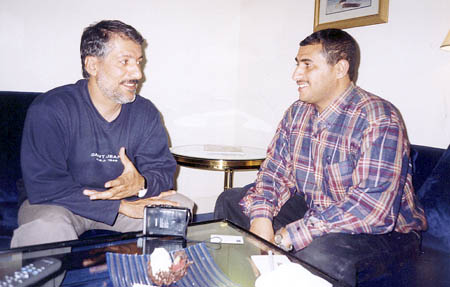The Government [Archives:2001/35/Law & Diplomacy]
Mohammed Al-Maghbashy
By the term “government” we mean that there are four definitions ranging from expansive to narrow.
First it means the government system or the government form. How is the general power practiced? This is the largest meaning.
Second it indicates the governing courts or the three powers (the Executive power, the Legislative power and the Judicial power).
The third is the executive power without the other powers. It is the narrowest meaning but the most common.
The last is the ministries in which the parliamentary system takes place.
The government forms:
It depends on the media that support the power and the way it is practiced. Here we find that the form of the country clearly differs from the government form and we shouldn’t mix them. Sometimes we find that there are countries similar in their forms. Either they are “united” or “compound”, and they differ in government forms.
On the contrary, some countries may not be similar in their forms but they have the same government forms. Arab countries are example of the former. They are unified countries but they do not have the same government form, e.g. Algeria, Egypt, Iraq and Yemen take the republican government form and Jordan, Saudi Arabia and Morocco take the royal government form. But examples of the latter we find in countries like Egypt, Pakistan and Mexico. They have the republican governmental forms but they differ in the country forms. Egypt is a unified country, but Pakistan and Mexico belong to the compound countries group because they are united countries.
The study of government forms took its place starting from Aristotle and Plato’s days up to the present, so they differ in the government forms or division according to their point of view. The most important division of this government is represented in dividing them according to:
-Their submission to the law or not.
-The legal government is the government which submits to and takes into consideration the rights of the whole.
The despotic government is the government that doesn’t obey orders or laws, and they adapt them if there is a need.
2- The distribution of powers: the absolute government and limited government. In the former the power is in the hands of one person but it submits to the legal decision. In the latter the powers are distributed between many countries to observe each other. It depends on the distribution of the powers in the presidential and parliamentary system.
3- How is a country’s Head of State appointed? The country in which the Head of State is occupied by hereditary is called the royal government, whereas in a republic, the President is appointed by elections and for limited number of years.
4- The source of the powers:
-The monarchy which is ruled or reigned by one person. Either he reached disposition by heredity (as king, caesar or emperor) or by strength, like a dictator.
-The minority or aristocratic government in which the country is ruled by common people or by the rich, as it was in England.
-The democratic government in which the country is governed by the majority is the best government. Hence the government can be legal, absolute, royal empire or royal despotic absolute empire. To talk about each type of government will take pages. Now can you identify what is the real form of government in Yemen?
——
[archive-e:35-v:2001-y:2001-d:2001-08-27-p:./2001/iss35/l&d.htm]


